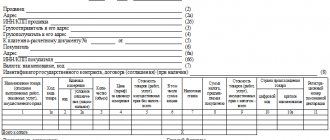Accounting for transactions on off-balance sheet accounts of a credit organization is carried out on accounts No. 906 - No. 918 and corresponding accounts No. 9999, 9998. Off-balance sheet transactions are reflected in the debit of one account and the credit of another account. Double entry is formalized by correspondence of accounts or accounting entries of a debited and credited account for the amount of the transaction. The procedure for accounting and reporting is limited by the regulations of the Bank of Russia. Off-balance sheet accounts reflect: funds and valuables that do not belong to the bank, but are in its custody and management (including under trust management); undue obligations and claims (forward transactions; deferred and overdue payments; securities (depository activities) in pieces. Primary accounting information on these accounts is recorded on off-balance sheet orders; on the basis of these data, analytical and synthetic accounting presented in the bank’s reporting is implemented.
The object of the study is the accounting of transactions in off-balance sheet bank accounts.
The purpose of the work is to consider the procedure for performing accounting for off-balance sheet transactions of credit institutions.
Problems solved in the work:
§ consider off-balance sheet accounts from the point of view of the chart of accounts and determine the reflection of off-balance sheet accounts in primary and periodic reporting;
§ identify the features of accounting for transactions on off-balance sheet accounts;
§ draw up a balance sheet for the next reporting date and draw brief conclusions about changes in the financial condition of the bank.
The procedure for accounting and reporting of off-balance sheet accounts of a credit organization
Off-balance sheet transactions of the bank are accounted for by the amount of these transactions in the accounts in the accounting and reporting system of the credit institution.
Accounting of credit institutions is an orderly system of collecting, registering and summarizing information in monetary terms about the property, obligations of organizations and their movement through continuous, continuous and documentary accounting of all business transactions. The objects of accounting are the property of organizations, their obligations and business transactions carried out by organizations in the course of their activities. The main objectives of accounting are: the formation of complete and reliable information about the activities of the organization and its property status; providing information necessary for internal and external users of financial statements, including regulatory organizations, in accordance with approved norms, standards and estimates; preventing negative results from the organization’s economic activities and identifying internal reserves to ensure its financial stability. All credit organizations are required to prepare financial statements based on synthetic and analytical accounting data.
The bank's balance sheet consists of two parts: an asset (shows the value of all property) and a liability (the bank's liabilities and its capital). Accounts are divided into balance sheet and off-balance sheet. Balance sheet accounts reflect cash and non-cash funds, settlements, borrowed funds, funds, income and expenses, profits and losses. Accounts are kept in multi-currency terms.
Off-balance sheet accounts reflect: unpaid authorized capital, securities, settlement transactions and documents, credit and leasing transactions, debt written off and taken off balance sheet, and there are also accounts for correspondence. Off-balance sheet accounts are grouped into sections based on the economic content of the values and documents recorded on them (Figure 1)
Fig. 1 Scheme of off-balance sheet accounts
Special banking documentation is developed and approved by the Central Bank of the Russian Federation and is mandatory for use. To maintain information about the bank’s activities based on off-balance sheet indicators, the documents presented in Table 1 are used. The forms of documents are unified and their details are standard as provided for in the regulations on settlement documents. An important and mandatory fact is the presence in the document of analytical and synthetic information, indication of corresponding accounts and the amounts of transactions performed. The signatures of financially responsible persons and controllers are checked against their samples. As a result of entering primary accounting information recorded in documents and processing it, the accounting department receives all the necessary data, both analytical and synthetic, reporting forms, balance sheets, etc.
Table 1
Documents for making entries on off-balance sheet accounts
The reporting of credit institutions is divided into periodic and annual, official for external users and managerial for internal use. Periodic - daily, five-day, ten-day, monthly and quarterly. Annual - content, volume and results of the bank’s work for the reporting period. The most important documents included in the reporting of credit institutions are:
turnover sheet;
balance sheet;
income statement and general financial statements.
Off-balance sheet account
Off-balance account
- an account designed to summarize information about the presence and movement of valuables that do not belong to a business entity, but are temporarily in its use or disposal, as well as to control individual business transactions. The concept of “off-balance sheet account” is also synonymous. The latter is most often used in relation to credit institutions.
Off-balance sheet accounts include:
- reserve funds of notes and coins
- borrowers' obligations
- settlement documents submitted to the bank for collection (to receive payments)
- valuables accepted for storage
- strict reporting forms, check and receipt books, letters of credit for payment, etc.
- Account 001 “Leased fixed assets”
- Account 002 “Inventory assets accepted for safekeeping”
- Account 003 “Materials accepted for processing”
- Account 004 “Goods accepted for commission”
- Account 005 “Equipment accepted for installation”
- Account 006 “Strict reporting forms”
- Account 007 “Debt of insolvent debtors written off at a loss”
- Account 008 “Securities for obligations and payments received”
- Account 009 “Securities for obligations and payments issued”
- Account 010 “Depreciation of fixed assets”
- Account 011 “Fixed assets leased out”
An organization can supplement the list of these accounts and apply them in accounting if it describes their characteristics in its accounting policies.
The nuances of working with off-balance sheet accounts
It would seem that since off-balance sheet funds do not directly relate to the company’s assets, maintaining documentation for their accounting is not particularly important. But in reality this is not at all the case. Competent work with off-balance sheet accounts allows you to:
- get a complete picture of the bank’s activities;
- avoid mistakes in audits;
- correctly determine the amount of taxes withheld from the bank.
Important! If a banking organization ignores the maintenance of off-balance sheet documentation or incorrectly or incompletely enters into it information about the material assets at its disposal, a fine may be imposed on its managers.
The most difficult thing is to enter into off-balance sheet documentation information about property rented by the bank or leased. Most often, the accountant performing this operation does not have data on the value of a specific asset, so it is quite difficult to determine at what price it was registered.
This is interesting: Free hotline number Svyaz Bank
This problem can be solved as follows:
- by contacting the supplier of material assets with a request for their value;
- by drawing up a report on the assessment of market value (independently or with the involvement of licensed appraisers);
- by entering objects into the report based on a conditional or quantitative assessment.
Advice: If the leased property belongs to the category of real estate, you can request a certificate from the BTI about its value.
Links
Wikimedia Foundation. 2010.
See what an “off-balance sheet account” is in other dictionaries:
- Adj. Related to the accounting of valuables, documents and orders that are not related to the assets and liabilities of banks. Ephraim's explanatory dictionary. T. F. Efremova. 2000 ... Modern explanatory dictionary of the Russian language by Efremova
off-balance sheet
- extra-balanced... Russian spelling dictionary
off-balance sheet
- extra-balance/news... Together. Apart. Hyphenated.
In the bank's accounting, an account in which values not related to the bank's assets are taken into account, as well as some monetary documents and orders for transactions. The bank’s off-balance sheet accounts take into account: monetary reserve funds... ... Financial Dictionary
See off-balance sheet account Glossary of business terms. Akademik.ru. 2001 ... Dictionary of business terms
Legal dictionary
An account of an enterprise or bank used to record values not included in the balance sheet and not reflected in its assets and liabilities. Raizberg B.A., Lozovsky L.Sh., Starodubtseva E.B.. Modern economic dictionary. 2nd ed., rev. M.: INFRA M. 479 pp..… … Economic Dictionary
Off-balance sheet account
— (English account outside of balance) in a bank’s accounting, an account that records values that are not related to its assets, as well as some monetary documents and orders for transactions. On V.s. taken into account... Encyclopedia of Law
The accounting account of an enterprise or bank, used to account for funds that do not belong to this enterprise as property, are not included in the balance sheet, are not reflected in its assets and liabilities, for example, leased fixed assets; commodity... ... Encyclopedic Dictionary of Economics and Law
off-balance sheet account
— an accounting account designed to account for funds that do not belong to a given enterprise as property, for example, leased fixed assets; commodity-material assets accepted for safekeeping; equipment accepted... ... Large legal dictionary
See also:
Accounts
are divided into
on-balance sheet
and
off-balance sheet
.
Balance sheet accounts
reflect cash and non-cash funds, settlements, borrowed funds, funds, income and expenses...
Section: Law, business, finance. OFF BALANCE
SHEET ACCOUNTS
.
When the value date arrives (on day T+2), claims and obligations are transferred from off-balance sheet
accounts
to
balance sheet accounts
for the corresponding personal
accounts
as follows
pledge agreement. Securities received by the bank are reflected in the debit of the off-balance sheet
account
.
as an expense to the off-balance sheet account
when they are disposed of.
To chart of accounts
includes: A.
Balance sheet accounts
.
Section 1. Capital and funds. ... B. Off-balance sheet accounts
. Section 2. Unpaid authorized capital of credit organizations.
As soon as balance sheet
accounts
61306 - 61406, together with the result of the current revaluation, are received...
The issuance of subsequent tranches within the maximum amount established by agreement is reflected in the same personal account
, opened on the corresponding
balance sheet
and
off-balance sheet accounts
, in...
Simultaneously with the opening of the above-mentioned personal account
on the balance sheet of the bank a-creditor and on
the off-balance sheet account
91309 “Unused limits for providing credit in the form of an overdraft...
Unlike balance sheet
accounts
, in which transaction records are reflected using the double entry method,
an off-balance sheet account
is characterized by single entries.
All other securities are classified as non-issue securities. Securities are also recorded in accounts
section "D" of the chart
of accounts
.
accounting ( off-balance accounts
).
Off-balance sheet accounts
– these are accounts intended to summarize information about the presence and movement of values that do not belong to an organization-economic entity, but are temporarily in its use or disposal.
Off-balance sheet accounts are subsidiary accounts of accounting.
They are used when the accountant needs information that is not on the balance sheet accounts.
Balances on off-balance sheet accounts are not included in the balance sheet, but are shown after its total, i.e. behind the balance.
The data from these accounts does not affect the financial result and does not need to be reflected in the company’s reporting.
Off-balance sheet account
An off-balance sheet account is an account of a bank, company, or organization in which certain values are stored that are not part of the liabilities or assets of the enterprise, and are not included in its overall balance sheet. Part of an off-balance sheet account may include:
— leased fixed assets; — equipment adopted for installation work; — inventory items transferred to the company for safekeeping; - privatization checks and so on.
The essence of an off-balance sheet account
Almost every business makes transactions that must be reflected in off-balance sheet accounts. When a company sells work record forms, rents an office, or simply transfers property as security, it cannot do without maintaining such an account. At the same time, the rules for accounting and maintaining off-balance sheet accounts are reflected in special Instructions reflecting the application of the Chart of Accounts.
The main tasks of maintaining an off-balance sheet account:
— summarize the available information; — record data on the movement and availability of valuables at the disposal of the enterprise; — control of individual business transactions, and so on.
Accounting is organized according to a simple scheme, when the transfer of obligations and the receipt of valuables at disposal are recorded exclusively in the debit of an off-balance sheet account, and disposals are recorded as a credit. At the same time, the off-balance sheet account does not intersect in any way with other accounts.
Many accountants have questions about whether it is necessary to reflect data in an off-balance sheet report at all. In fact, there are a number of advantages to maintaining such documentation:
1. The data recorded in the report allows you to draw up a Certificate of the presence of valuables in off-balance sheet accounts. In fact, such a document becomes one of the annexes to the general balance sheet. Without having such indicators at hand, it is impossible to get a complete picture of the company's activities. If information is incorrectly reflected or not reflected in such accounts, the audit may conclude that the amount of misstatement exceeds the acceptable parameter.
2. If information is incompletely reflected on an off-balance sheet account or if it is completely ignored, a fine may be imposed on company officials in the amount of 2 to 3 thousand rubles.
3. The amount of company taxes directly depends on the correctness of the reflection of all information.
For what purposes are off-balance sheet accounts used?
Typically, on off-balance sheet accounts:
1) records are kept of the presence and movement of property (to ensure its safety):
- or not owned by the organization;
or the organization’s own property, the cost of which is written off as expenses.
2) information is collected that needs to be disclosed in the notes to the balance sheet and the income statement.
The main objectives of off-balance sheet accounts are:
- ensuring control over the use of material assets that do not belong to the enterprise;
control over the safety of material assets listed on these accounts, over the timely execution of documents for the receipt and disposal of these funds;
ensuring the correct organization of accounting on these accounts;
providing comprehensive and complete information on these accounts to assess the creditworthiness and financial stability of the enterprise.
Property inventory
Any movement of material assets that are not the property of the bank is reflected in off-balance sheet accounts of the corresponding categories. The fact of transferring a material object to an account, as well as writing it off from the balance sheet, is formalized in accordance with the document flow accepted in the financial organization. For example, receipts can be reflected in invoices or receipt orders, write-offs can be reflected in acts in the prescribed form, etc.
Off-balance sheet accounts are subject to periodic inventory. For these purposes, a special commission is formed and comparison sheets are drawn up. In addition to the commission members, the person financially responsible for a specific group of bank assets must take part in the inventory. Upon completion of the procedure, the comparison sheets and reports on the inspection results are endorsed by all members of the commission, as well as by the financially responsible employee.
The shortage identified during the inventory is reimbursed by the bank to the owner of the assets. This compensation is reflected in the documents in the item “Other expenses”. If surpluses were discovered during the audit, they can be placed on the balance sheet of the financial organization in the “Other profit” category.
https://youtu.be/Bxy9zTTC6bQ











